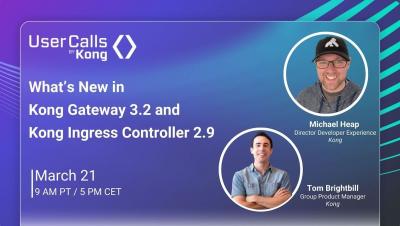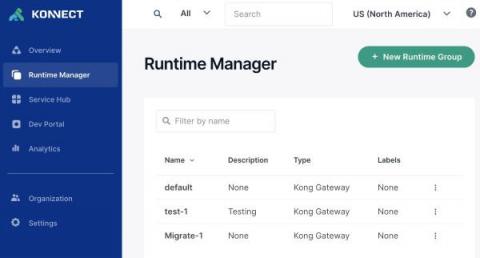Systems | Development | Analytics | API | Testing
Kong
Building a Cloud Agnostic API Platform - Design and Best Practices
Multi-Tenancy and Kong: An Architectural Guide
Engineering organizations building modern API-driven systems have different priorities when it comes to their API management solution. These priorities will drive design decisions about the deployment of various components for API gateways. Some organizations are looking to optimize compute resource utilization, helping to control costs or reduce operational toil.
How and Why to Migrate from Kong Open Source to Kong Konnect
Kong Konnect is a powerful SaaS-based API lifecycle management platform that provides a fast path for people looking to get started with Kong API Gateway. For existing users of Kong’s open-source gateway, it offers a way to rapidly take advantage of a scalable, highly-available architecture while upgrading to an Enterprise-class feature set and support options.
Kong Konnect Adds Portal RBAC API, OAS Validation Plugin
Wondering what’s new in Kong Konnect? In this roundup, we’ll highlight some of the new capabilities and expansions in Kong Konnect, including portal role-based access control (RBAC) API, OAS validation plugin, and support for Kong Gateway 3.2. Read on to learn more.
What's New in Kong Enterprise 3.2?
We’re happy to announce the general availability of Kong Enterprise 3.2. In this release, we’ve taken significant steps to ensure the smooth and reliable operation of our API management solution. In Kong Enterprise 3.2, we’ve delivered key functionality for customers that operate Kong Enterprise in a hybrid environment in order to further enhance its reliability. Specifically, we’ve expanded Kong Enterprise’s capabilities in the following areas.
API Secrets Management: Integrating Kong Gateway with Your Favorite Identity Manager
Kuma Gateway API: Your Secret Weapon for Multi-region and Universal API Connectivity | #kuma
APISecOps Tutorial: Delivering APIs Securely Together with Kong Konnect and Red Hat OpenShift Service on AWS (ROSA)
Red Hat OpenShift is the industry’s leading enterprise Kubernetes platform that runs ubiquitously across on-prem, and the cloud. With Red Hat OpenShift Service on AWS (ROSA), a managed Red Hat OpenShift platform that runs natively on AWS, it is even easier to get kick-started on an enterprise-ready instance of Red Hat OpenShift in the cloud. Kong similarly distinguishes itself as a multi-platform, multi-cloud API Management solution pushing the vision of APIs.
Debugging Kong Requests: 7 Kong Gateway Troubleshooting Tips
Developers will remember times when they were trying to figure out why something they were working on wasn’t behaving as expected. Hours of frustration, too much (or perhaps never enough) caffeine consumed, and sotto voce curses uttered. And then — as if by fate — the issue is narrowed down to a simple oversight that makes perfect sense upon discovery. Problem solved!











